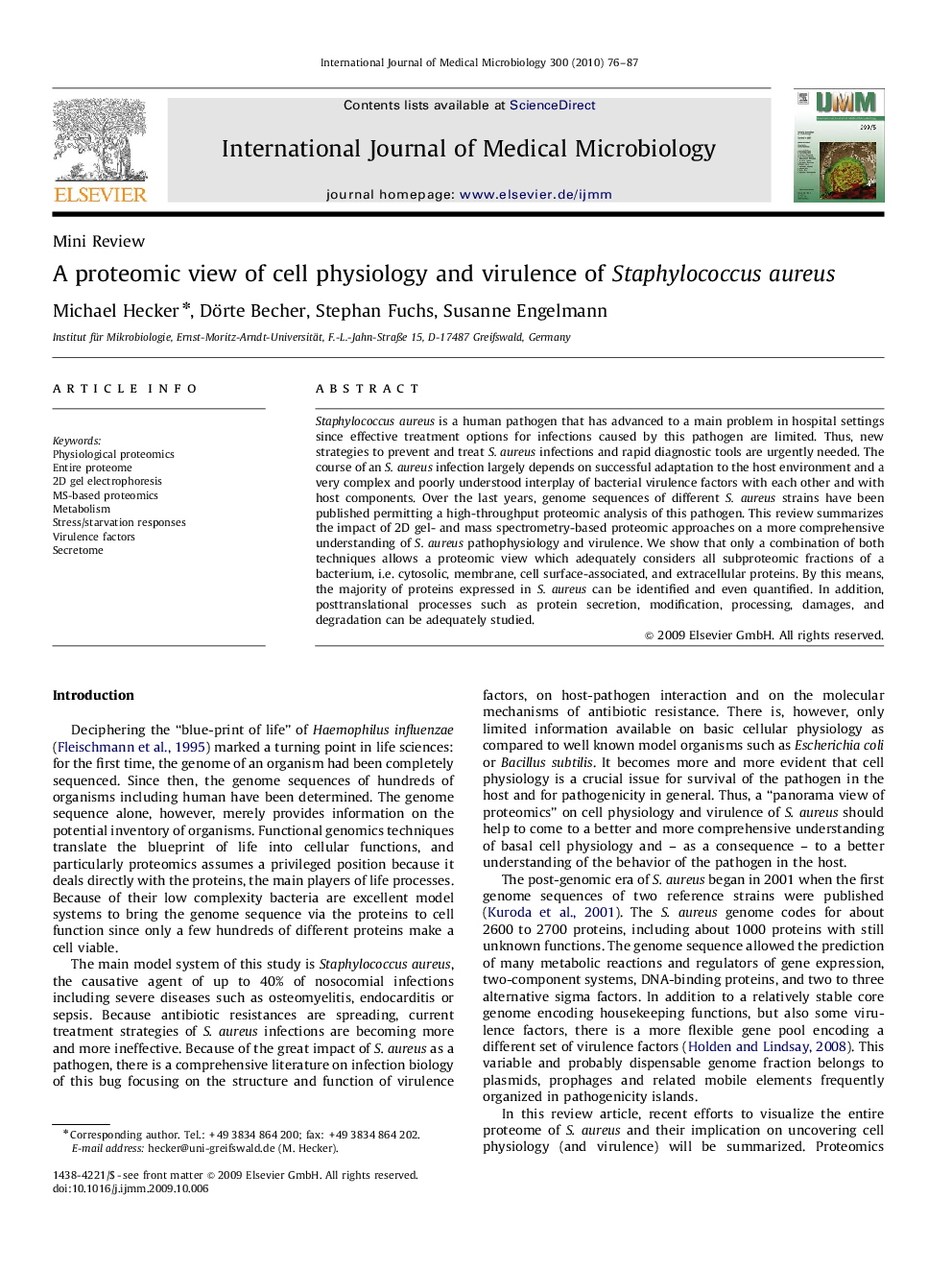| Article ID | Journal | Published Year | Pages | File Type |
|---|---|---|---|---|
| 8386128 | International Journal of Medical Microbiology | 2010 | 12 Pages |
Abstract
Staphylococcus aureus is a human pathogen that has advanced to a main problem in hospital settings since effective treatment options for infections caused by this pathogen are limited. Thus, new strategies to prevent and treat S. aureus infections and rapid diagnostic tools are urgently needed. The course of an S. aureus infection largely depends on successful adaptation to the host environment and a very complex and poorly understood interplay of bacterial virulence factors with each other and with host components. Over the last years, genome sequences of different S. aureus strains have been published permitting a high-throughput proteomic analysis of this pathogen. This review summarizes the impact of 2D gel- and mass spectrometry-based proteomic approaches on a more comprehensive understanding of S. aureus pathophysiology and virulence. We show that only a combination of both techniques allows a proteomic view which adequately considers all subproteomic fractions of a bacterium, i.e. cytosolic, membrane, cell surface-associated, and extracellular proteins. By this means, the majority of proteins expressed in S. aureus can be identified and even quantified. In addition, posttranslational processes such as protein secretion, modification, processing, damages, and degradation can be adequately studied.
Related Topics
Life Sciences
Biochemistry, Genetics and Molecular Biology
Biochemistry, Genetics and Molecular Biology (General)
Authors
Michael Hecker, Dörte Becher, Stephan Fuchs, Susanne Engelmann,
